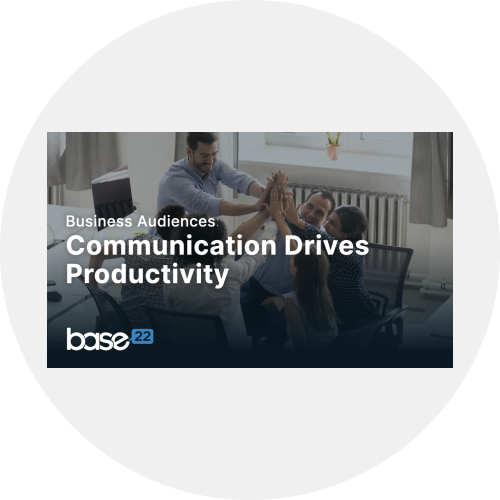In today’s landscape, organizations struggle to attract and retain top talent. In fact, many find that their employees are disengaged from the digital tools and resources provided to them. There are multiple factors behind this scenario, some of them not new, from new distractions from personal tech to “information overload” from an excess of notifications and alerts. Understanding employee experience and how to drive productivity through your digital channels are major challenges for designing HR portals in modern organizations of all sizes.
Today there is a vast offering of digital solutions supporting HR processes. Some of these include:
- Portals and digital platforms
- SaaS software
- Custom applications
- Mobile apps
- Etc.
This article will focus on HR portals implemented with a Digital Experience Platform (DXP). This type of portal provide employees with self-service access to critical information while engaging them toward optimal behaviors. This, in turn, can lead to better business outcomes and a more positive employee experience.
Designing and implementing HR portals to enhance your digital employee experience (DEX) and transform your workforce have its own rules, especially when targeting large workforces and hybrid work.
That said, not many businesses know what an effective HR portal should look like and what capabilities it should offer. With that in mind, we bring a short guide discussing the best principles for designing HR portals in 2023.

Designing HR Portals in 2023: A quick guide
1. User-Centric Approach: Understand Your Employee Needs
A robust HR portal design starts with understanding its users – employees. What are the different types of groups or audiences in your workforce? What is important to them? What actions are they looking to complete daily? What inquiries does your HR department receive most frequently?
Every employee is different and engages differently with the digital workplace stack.
To create a user-centric HR portal that is easy to use and understand, it is important to apply user experience (UX) design principles. Superior HR portals should not only cater to unique employee needs; they must also:
- Adapt as per audience segmentation
- Support role-based access
- Deliver smart content and information tailored to the needs of employees who may be dispersed across the globe, working remotely or in-office, speaking different languages, or having impairments
- Comply with Accessibility standards such as ADA and Section 508
- Provide a responsive design or support mobile devices
The best HR portals focus on understanding the needs of the employees and their preferences for digital interactions, delivering user-centered design.

Communication Drives Productivity
Check out our booklet on Internal and External Audiences for large and growing organizations.
Free Download2. Design User Journeys to Support Employee Experience
Designing user-focused journeys is another important principle for an employee HR portal design. A truly functional employee portal should be based on a deep analysis of a user’s steps to complete a specific action within the portal.
When creating an employee portal, it is paramount to map out their journey, from the log-in to completing their desired action. Is the interface easy to navigate? Does it guide the user to relevant parts of the portal? Furthermore, think about how your HR portal works on mobile devices. Is it optimized for on-the-go usage?
Effective and user-focused journeys is a key tactic to avoid information overload in a digital workplace. Understanding when an alert or notification is triggered and how the user needs to engage are relevant insights to create a balanced employee experience that is focused and aligned with your company’s primary goal. User experience is the foundation of digital employee experience, and if it is not considered, HR portals cannot fulfill their primary purpose.
3. Enable Self-Service for HR Processes
When designing an HR portal, consider tools and resources your employees would benefit from using. One such feature is self-service and automation.
Self-service portals enable your workforce to efficiently manage HR processes, such as requesting vacations, submitting sick notes, or reviewing benefits, without engaging in lengthy email communication with the HR department or grappling with laborious paper forms. Having digitized processes and automated workflows will not only reduce the paper load but also reduce time and dependency on support agents, which will result in less cost/effort per transaction.
Furthermore, HR portals can centralize important operational information, empowering employees to find answers themselves while alleviating the HR department’s workload.
4. Make Onboarding Processes and Training Easier
Effective onboarding is essential in shaping an employee’s perception of the company. In fact, according to Harvard Business Review, companies that fail to provide a positive onboarding experience are more likely to lose their new hires.
Therefore, when it comes to designing your HR portal, think not only about how it can benefit your existing employees but also about how they can facilitate training and onboarding through a clean and intuitive design. Modern employee portals can be equipped with resources and information, helping new hires integrate into the company faster and become productive sooner.
When designing HR portals, consider delivering a comprehensive and seamless onboarding experience per your business goals and requirements. The best HR portals contain some of the following features:
- Information on the company’s culture, values, and mission
- Training and development resources, supported by video and audio
- Interactive forms
- FAQs and knowledge bases
- Feedback surveys
- Procedures, policies, and guidelines with regular updates
To see these features in action, check out some of our case studies for employee portals that provide support to HR processes.
5. Create Content Authoring Workflows to Keep Important Documentation In Check
Policies and procedures change often and can be a pain to communicate to your employees. The best HR portals solve this issue through content-authoring workflows.
Workflows enable content authors (HR personnel or subject matter experts) to create, review, update, and publish content themselves on the portal. By using content-authoring workflows, workplace policies can be kept fresh and relevant, bridging the information gap and improving the overall employee experience.
In addition to workflows, HR portals implemented with a Digital Experience Platform leverage robust Content Management System functionality, such as managing content, scheduling, setting the expiration of resources, translation workflows, audience targeting, and tagging and categorizing. If your company produces and offers a lot of content and communication for your workforce, having a robust HR portal is the way to go.
6. Feedback and Two-Way Communication
Another important area to consider when designing HR portals is feedback. What key channels can help you hear your employees’ needs? Where can they submit their concerns? How can you identify which processes need to be improved or are not working at all?
The best HR portals support feedback processes and establish two-way communication through interactive forms and surveys. Leveraging Digital Experience Platform functionality, you can provide forms with drag-and-drop customizable fields; reusable widgets, multimedia, and Likert scales; and create reports from the results. Whether they are open fields for them to express their thoughts or quick surveys to collect information, interactive forms have proven to be an important feature for HR departments in growing organizations with digital workplaces.
With the rise of social media and interactive platforms, establishing two-way communication with your workforce and designing touchpoints that provide feedback is critical to detect rising concerns and ensuring the employee experience is positive.
Designing HR Portals: Takeaways
The best HR portals are the ones that are designed with employees’ needs in mind. To succeed in today’s fast-paced business world, companies must implement digitalization strategies that enhance employee experience and increase productivity. An employee HR portal can be the perfect solution to achieve these goals, but if you’re unsure where to begin or how to create an engaging and seamless portal design, we can help. As portal and platform experts, at Base22 we have designed and implemented employee portals with the biggest brands in the world. Contact us now to discuss your unique requirements for an employee portal, and let our team be your partner in success.
Transform your Employee Experience with Agility
Our modern solutions deliver tailored experiences and automated workflows for thousands of employees across the globe.
Learn more


